Embarking on a crochet journey often brings the joy of creating cozy blankets, but the road may encounter bumps along the way, leading to uneven stitches or tension discrepancies. Fear not, as addressing and fixing an uneven crochet blanket is a common challenge with practical solutions. In this guide, we’ll delve into the troubleshooting process, offering insights into identifying the root causes of unevenness and providing step-by-step instructions for how to fix uneven crochet blanket.
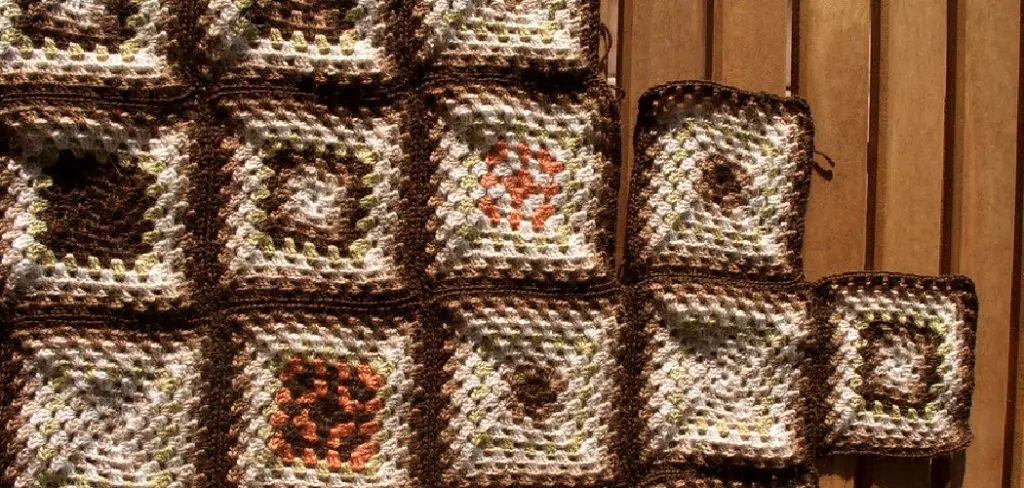
From adjusting tension to employing strategic blocking techniques, this tutorial aims to empower both novice and experienced crocheters with the skills to rescue and perfect their projects. Join us on a mission to transform uneven stitches into a harmonious and polished crochet blanket, ensuring that your handmade creation not only provides warmth but also showcases the beauty of even and well-balanced craftsmanship.
The Common Issue of Uneven Stitches in a Crochet Blanket
Crocheting a blanket is a relaxing and enjoyable hobby for many people. However, one common issue that can arise when crocheting a blanket is uneven stitches. Uneven stitches can cause your finished project to look unappealing and even affect the overall shape of the blanket. In this section, we will discuss how to fix uneven crochet blankets and provide some helpful tips to avoid this issue in the future.
Identifying Uneven Stitches
Before we go through how to fix uneven crochet blankets, it is essential to know how to identify them. The most apparent sign of an uneven stitch is when one side of your project looks longer or shorter than the other side. This difference can be a result of varying tension while crocheting, where one side is tighter or looser than the other. Another thing to look out for is when your stitch count does not match up with the required number of stitches in a row. This can also cause unevenness in your project.
10 Methods How to Fix Uneven Crochet Blanket
1. Blocking
One way to fix an uneven crochet blanket is by blocking it. This involves wetting the blanket and shaping it into the desired size, then allowing it to dry completely. This can help even out any uneven stitches or tension issues.
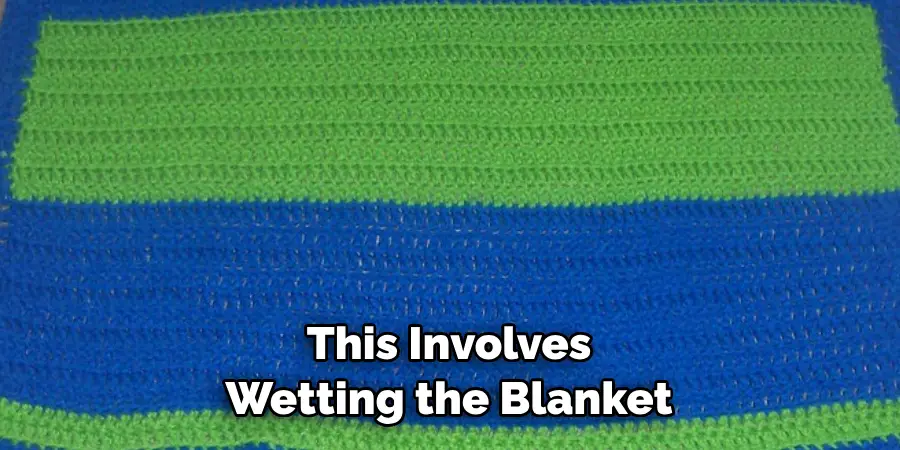
2. Adjusting Tension
If your blanket is uneven due to inconsistent tension, you can try adjusting your tension while crocheting. You can do this by consciously pulling your yarn tighter or looser as you work, depending on where you need to even out the stitches. This may take some practice and can be especially tricky for beginners, but with patience and persistence, you can achieve more uniform tension throughout your blanket.
3. Using a Different Hook Size
Sometimes an uneven blanket can be fixed by using a different hook size. If your stitches are too tight in some areas, try using a larger hook for those sections. If they are too loose, use a smaller hook. This can help balance out the tension throughout your blanket and make it look more even.
4. Ripping Out Rows
If the unevenness is only in certain sections of the blanket, you may need to rip out those rows and re-crochet them with more consistent tension. It may seem like a lot of work, but it will result in a more even finished product.
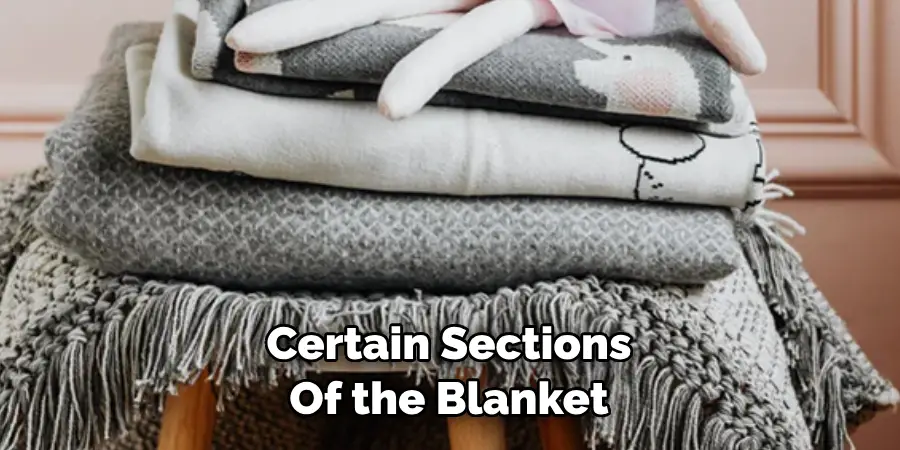
5. Adding Extra Stitches
In some cases, adding extra stitches in certain areas can help even out an uneven blanket. For example, if one section looks narrower than others, adding an extra stitch or two in each row can help widen it and make it more uniform. Similarly, if one section looks longer than others, adding extra stitches can help shorten it and make it match the rest of the blanket. However, be careful not to add too many extra stitches as this can create new uneven sections.
6. Crocheting Borders
Adding a border around your blanket can help hide any minor unevenness in the main body of the blanket. You can choose a simple single crochet border or get creative with different stitch patterns. A border can also add a decorative element to your blanket and make it look more polished.
7. Working from Both Ends
To ensure consistent tension throughout your entire blanket, try working from both ends at once instead of just one end at a time. This will allow you to compare and adjust as needed as you go along. Simply flip the blanket over and crochet from the opposite end. This technique is especially helpful for larger projects such as a full-sized blanket.
8. Using Stitch Markers
Stitch markers can also be helpful when trying to fix an uneven blanket. You can place them at regular intervals and make sure your stitches are consistently the same size from one marker to the next. This will help you identify any problem areas and fix them as you go along.
9. Crocheting in the Round
If you’re making a granny square or other motif-based blanket, crocheting in the round can help prevent unevenness caused by turning your work. This way, all your stitches will be facing the same direction. When crocheting in the round, you will typically be working in a spiral pattern rather than rows.
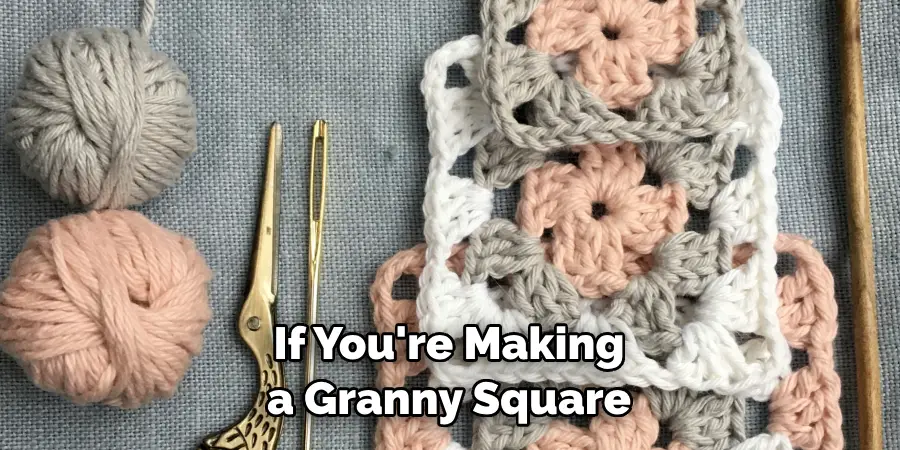
10. Practice Makes Perfect
Lastly, the best way to avoid an uneven crochet blanket is to practice and improve your skills. With time and experience, you’ll be able to create more even stitches and tension without even thinking about it. Don’t get discouraged – just keep practicing!
Analyzing the Blanket for Inconsistent Stitch Tension
A common problem among crocheters, both beginners and experienced alike, is the creation of an uneven crochet blanket. This inconsistency in stitch tension can result in a blanket that looks wavy or bumpy instead of having a smooth and uniform appearance. While this may seem like a daunting issue to fix, there are actually several techniques you can use to correct an uneven crochet blanket.
Firstly, it is important to identify the root cause of the uneven stitches. This can be caused by a variety of factors such as using different hook sizes, not keeping consistent tension throughout your work, or even using different yarn weights. By understanding what is causing the inconsistency, you can then choose the best method for correcting it.
One method for fixing an uneven crochet blanket is the “block and stretch” technique. This involves wetting your blanket, pinning it to a flat surface, and then gently tugging on the edges to even out any uneven stitches. It’s important to let the blanket dry completely while still pinned in place to ensure that the stitches don’t revert back to their original tension.
Things to Consider When Fixing an Uneven Crochet Blanket
Crocheting is one of the most popular hobbies in the world. It is a fun and creative way to pass the time and create beautiful, unique items. One of the common projects that crocheters undertake is making a crochet blanket.
Determine the Cause of Unevenness
The first step in fixing an uneven crochet blanket is to determine the cause of the problem. This will help you find the appropriate solution and prevent it from happening again in your future projects. Some common causes are using different yarn weights, incorrect stitches, or varying tension while crocheting.
Check the Tension
Tension plays a crucial role in crochet projects. Uneven tension can result in an uneven crochet blanket. To fix this, you will need to go back and adjust your stitches by pulling them tighter or looser as needed. It may take some practice, but with time, you will be able to maintain consistent tension throughout your project.
Use Blocking Techniques
If your uneven crochet blanket has a lot of wavy or stretched out sections, blocking can help to even them out. To block your crochet blanket, you will need to dampen it with water and stretch it into the desired shape before allowing it to dry completely.
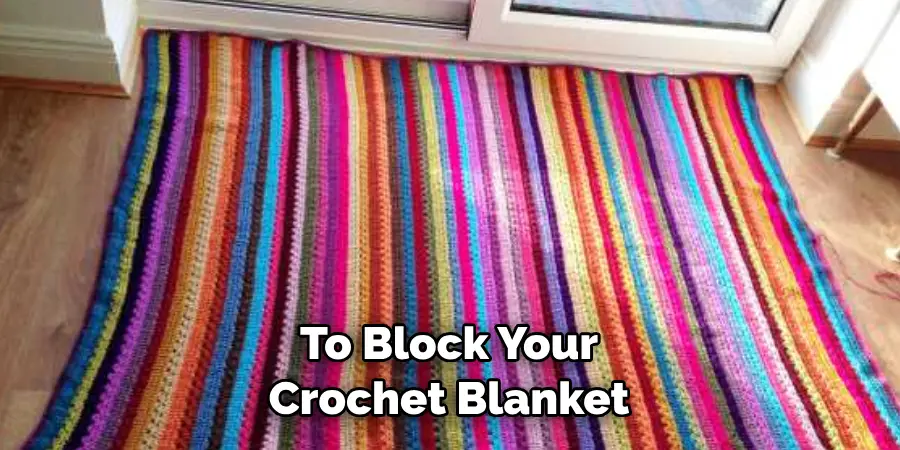
Common Mistakes to Avoid When Crocheting
Crocheting can be a therapeutic and enjoyable craft, but it’s not without its challenges. One of the most common issues that crocheters face is creating an uneven blanket. This can happen for a variety of reasons, such as using different tension throughout the project or making mistakes in stitch counts.
Correcting Tension
One of the main causes of an uneven crochet blanket is inconsistent tension. This refers to how tightly or loosely you hold your yarn and hook while crocheting. If your tension varies throughout the project, it can result in different sized stitches and an overall uneven appearance.
Checking Stitch Counts
Another common mistake that leads to an uneven blanket is making mistakes in stitch counts. This can happen if you accidentally skip a stitch or add an extra one in the wrong spot. These errors can throw off the entire pattern and result in an uneven surface.
Fixing Mistakes
If you do notice an uneven area in your crochet blanket, don’t panic! There are several ways to fix these mistakes and create a more even surface.
One method is to use a technique called blocking. This involves wetting the project and then shaping it into the correct dimensions while it dries. This can help stretch out any uneven areas and create a more uniform appearance.

Conclusion
In conclusion, don’t let an uneven crochet blanket discourage you from creating beautiful and cozy projects. With these tips and tricks on how to fix uneven crochet blanket, you can easily fix any unevenness and create a perfectly aligned and symmetrical blanket. Remember to take your time and use the right tools for the job, such as stitch markers and measuring tapes.
Don’t be afraid to unravel a few rows if needed or try different techniques until you find what works best for you. And always remember, the imperfections in handmade items are what make them special and unique. Embrace the process of fixing an uneven crochet blanket and turn it into a learning experience for future projects. So go ahead, grab your hook and yarn, put on your favorite TV show or podcast, and enjoy the therapeutic art of crochet while creating something beautiful that will keep you warm for years to come!
Expertise:
Crafting expert with a focus on innovative techniques and diverse materials.
Specialization:
- Textile arts (weaving, embroidery, and fabric dyeing)
- Woodworking and furniture design
- Mixed media and upcycling projects
Recognition:
- Featured in local art exhibits showcasing innovative craft projects
- Collaborated with community organizations to promote crafting workshops
- Received accolades for contributions to sustainable crafting initiatives
Mission:
- To inspire and empower crafters of all levels to discover their creative potential
- Encourages experimentation and self-expression through hands-on projects

